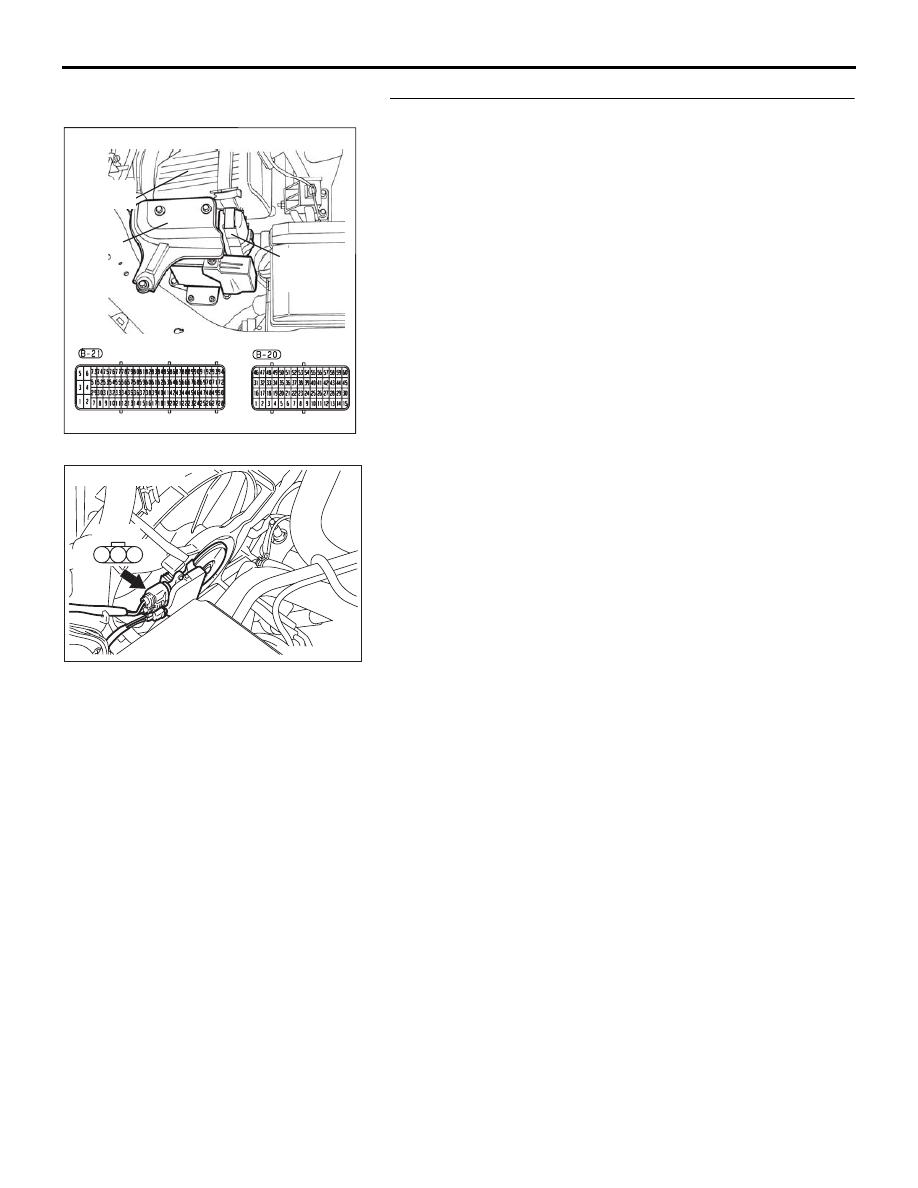Mitsubishi 380. Manual - part 235

ENGINE COOLING DIAGNOSIS
ENGINE COOLING
14-24
STEP 6. Check the fan controller.
(1) Disconnect fan controller connector A-24.
(2) Back out connector terminal pin 2 from connector housing.
(3) Reconnect the connector with connector terminal pin 2 still
removed.
(4) Turn the ignition switch to the "ON" position.
(5) Check for the cooling fan operation.
• The cooling fan rotates. (with connector terminal pin 2
disconnected)
(6) Check for the cooling fan operation.
• Using a suitable probe connect the fan controller termi-
nal 2 at controller side to earth.The cooling fan stops.
(When pin 2 of fan controller is connected to earth)
(7) Turn the ignition switch to the "OFF" position.
(8) Disconnect fan controller connector A-24, and re-locate
connector terminal pin 2 into connector housing.
(9) Reconnect the connector with connector terminal pin 2
installed correctly.
Q: Does the cooling fan rotate? And when the fan
controller pin 2 is connected to the body earth, does
the cooling fan stop?
YES : Go to Step 7.
NO : Replace the fan motor and fan controller (Refer to
16DB400A
COVER
ENGINE
CONTROL
UNIT
AIR
CLEANER
04DB008A
1
2
3
A-24
Connector: A-24